Results 11,711 to 11,720 of 12091
Thread: Anandtech News
-
04-28-23, 10:52 PM #11711
Anandtech: Matrox Adopts Intel Alchemist GPUs for New Luma Graphics Cards
While they've long since given up developing GPUs, Matrox has remained a notable player in the video card industry for over four decades. These days, the company has settled into a modest role of providing graphics cards based on other vendors' GPUs for use in niche or boutique use cases, where Matrox can differentiate based on their software and support. And while their sales volume as a whole is limited, there's a certain degree of validation that comes from Matrox tapping a vendor's GPUs for their latest video cards.
To that end, Intel this week has finally earned their tip of the hat from the oldest of the video card vendors, with the announcement of a new series of multi-monitor display cards built around Intel's Alchemist architecture GPUs. Matrox's new Luma series graphics cards are based on Intel's Arc A310 and A380 graphics hardware, with the niche video card maker looking to tap into the Alchemist's class-leading video decoding and encoding capabilities, as well as the display output features and flexibility that are critical for a multi-display card.
Matrox Video's Luma family of graphics boards includes three products: the full-sized single-slot Luma A380 based on the Arc A380 (ACM-G11 with 1024 stream processors) with 6GB of memory; the low-profile single-slot fanless Luma A310 based on the Arc A310 (ACM-G11 with 768 stream processors) with 4GB of memory; and the low-profile single-slot Luma A310F that is equipped with a active cooling system.
All three Matrox Luma graphics cards have four DisplayPort 2.1 UHBR10 (40Gbps) outputs and thus can drive four 4Kp144/5Kp60 monitors (uncompressed, 4:4:4) or two 8Kp60 or 5Kp120 displays using two of such ports for each displays. As for features, they offer the same capabilities as other Intel Arc A310/A380-based offerings, including support for DirectX 12 Ultimate, OpenGL 4.6, Vulkan 1.3, and OpenCL 3.0 APIs, as well as encoding and decoding of H.264, H.265, VP9, and AV1 video streams. As an added bonus, they retain support for Intel's oneAPI for compute tasks, as well as the Intel Distribution of OpenVINO toolkit for AI development.
All of the Luma graphics cards consume no more than 75W and can be powered entirely via a PCIe slot without any auxiliary power connectors, and the A310-based offerings are intended to fit into the most compact PCs that are out there. Furthermore, their single-slot design means that upwards of several cards can be installed into a single desktop PC for systems that need to drive eight, 12, or more monitors.
Meanwhile, it's interesting to note that while Matrox has not announced the discontinuation of their previous generation cards for these product segments – the NVIDIA based D-series and AMD-based M-series – in terms of specifications these new Intel cards should supplant the older cards in every way. Intel's DisplayPort 2.1 capabilities are likely the driving factor given Matrox's intended niche, with NVIDIA in particular being boxed out by not including DisplayPort 2.1 functionality with their Ada Lovelace generation GPU architecture.
Matrox Video's Luma boards are aimed primarily at the medical, digital signage, control room, video wall, and industrial markets. The cards come with a base three-year warranty, which can be further extended and a guaranteed lifecycle of seven years, which is important for some of the markets that they are intended for.
Other advantages Matrox's Luma board offer include support for Matrox's PowerDesk software developed to handle exotic multi-display configurations.
Matrox did not announce prices of the boards, though given their orientation on commercial, professional, and industrial applications, they will be priced accordingly.
More...
-
04-28-23, 10:52 PM #11712
Anandtech: Intel Reports Q1 2023 Earnings: A Record Losing Quarter Goes Better Than E
Kicking off our coverage of the first earnings season of the year for the tech industry, we as always start with Intel. The blue-hued blue-chip is the first out of the gate to report their results for the first quarter of 2023, with Intel picking up the pieces after a rough end to 2023, and a rather painful start to 2023. With revenue down on a yearly basis almost across the entire board thanks to a major, industry wide slump in client and server sales, Intel’s focus has been on battening down the hatches to weather this rough period, while preparing for an eventual (if modest) upturn in the market later this year.
For the first quarter of 2023, Intel booked $11.7B in revenue, a precipitous 36% drop from the year-ago quarter. As was the case in Q4, Intel is in the midst of a major industry slump, which has hit revenues hard and operating/net incomes even harder. Intel closed the quarter in the red on an operating income basis, losing $1.5B, and the company’s overall net loss was a staggering $2.8B on a GAAP basis.
More...
-
05-02-23, 05:37 AM #11713
Anandtech: Intel PR Confirms Chip Branding Changes in the Works: Core i Series to Giv
In an unusual move, Intel's director of global communications, Bernard Fernandes, took to Twitter this morning to confirm that the chip giant is preparing some chip branding change for later this year. Citing that the company is at an “inflection point” ahead of the launch of their Meteor Lake architecture client CPUs later this year, Intel is apparently developing something new for branding their first mass-scale chiplet-based consumer CPU.
Yes, we are making brand changes as we’re at an inflection point in our client roadmap in preparation for the upcoming launch of our #MeteorLake processors. We will provide more details regarding these exciting changes in the coming weeks! #IntelYes, we are making brand changes as we’re at an inflection point in our client roadmap in preparation for the upcoming launch of our #MeteorLake processors. We will provide more details regarding these exciting changes in the coming weeks! #Intel
— Bernard Fernandes (@Bernard_P) May 1, 2023
While the tweet in question doesn’t specifically address what it’s in response to, from context and timing it’s almost certainly a reaction to recent rumors that Intel is preparing to change their branding strategy for their Core family of consumer chips. And while it’s AnandTech policy not to republish or otherwise comment on rumors, an official comment from a high-ranking Intel PR representative means that this is no longer a mere rumor, and that changes are indeed in the works.
The current Core paradigm has been in place since late 2008 with the launch of the generational Core family and the now familiar i3/i5/i7 tiers. While Intel has since added the i9 tier and played with suffixes a few times in the last 15 years, Core branding has remained relatively consistent as a whole for what’s become 13 generations of parts.
But if the rumors are true, then the Core family will soon lose its i-series moniker. Based on benchmark data uploaded to the Ashes of the Singularity benchmark results database – a notorious source of leaks from hardware testers who neglect to turn off results reporting – an Intel Core Ultra 5 1003H has been spotted in the database. Which in turn suggests that Intel is intending to phase out the Core i-series branding for new Core Ultra branding.
To be sure, Intel’s tweet does not confirm the Ultra branding; and Ashes alone is not an authoritative source. But given that Intel has opted to confirm that they are making some brand changes to align with the Meteor Lake launch, if it's not Ultra, then some other kind of branding change is clearly in the works.
More...
-
05-02-23, 05:37 AM #11714
Anandtech: Microsoft To Stop Self-Branded PC Peripherals, Set to Focus on Surface Ins
Microsoft has confirmed that the company will discontinue selling PC accessories under the Microsoft brand, narrowing the firm's focus to premium-priced peripherals sold under the Surface brand. The decision marks a major fork in the road for Microsoft-badged keyboards and mice, an era that started in 1983. And while the company isn't going to cease the production of PC accessories entirely, the shift to Surface represents a much smaller scope in products going forward. This change, in turn, calls into question the future of ergonomic peripherals at Microsoft, a traditional niche for the company that has resulted in some of their best-known (and most beloved) PC accessories.
"Going forward, we are focusing on our Windows PC accessories portfolio under the Surface brand," Dan Laycock, senior communications manager at Microsoft, told The Verge. "We will continue to offer a range of Surface branded PC Accessories — including mice, keyboards, pens, docks, adaptive accessories, and more. Existing Microsoft branded PC accessories like mice, keyboards, and webcams will continue to be sold in existing markets at existing sell-in prices while supplies last."
The statement contradicts information published by Nikkei about Microsoft's alleged plans to scale back production of Surface-branded gadgets.
"We were recently informed by the client [Microsoft] to stop making stand-alone keyboards," an executive at a Microsoft supplier reportedly told Nikkei. "We were told the Surface series will still be one of Microsoft's development focuses, but just not the peripherals anymore."?
Microsoft confirmation about its focus shift towards Surface-branded PC accessories comes several months after the company announced a change in its hardware portfolio, which was a part of some 10,000 job cuts. The PC market is struggling due to macroeconomic challenges and uncertainty among consumers. In fact, Microsoft's own devices revenue, which includes Surface, PC accessories, and HoloLens, declined by 30% year-over-year in its most recent quarter, The Verge notes.
Microsoft-branded gadgets have been rather popular on the market over the past four decades, and while behind suppliers like Logitech, HP, and Dell, they've held their place – especially in the ergonomics market. Still, it has been getting increasingly hard for Microsoft to maintain its market share given the increasing number of players in the PC peripherals segment in general. The lucrative gaming keyboards and mice industry has been dominated by companies like Razer and Logitech for a while and then relatively new entrants like Corsair have not been making life of Microsoft any easier in the past decade with their highly-competitive products.
Surface-branded peripherals are a different segment though. They are not aimed at gamers and are not aimed at general users. Instead, they are designed for consumers willing to pay extra for advanced experience and businesses/enterprises for specific functionality. In fact, even Microsoft's recently released Surface-badged Thunderbolt 4 hub is clearly designed for enterprise uses that need functionality like remote management.
Ultimately, although Microsoft is not exiting the peripherals market entirely, the company's change in plans for the future of their hardware accessories seems to be much more significant than just a branding exercise. While Microsoft-designed mice, keyboards, and other devices will live on, narrowing their focus to premium, Surface-branded parts is a big change for a market that Microsoft has been a part of since almost the dawn of the PC – and likely not one for the better.
More...
-
05-03-23, 07:43 PM #11715
Anandtech: Solidigm Synergy 2.0 Amplifies P41 Plus and P44 Pro Performance with Custo
Solidigm has been active in the PC client SSD market with the QLC-based P41 Plus and the traditional TLC-based P44 Pro for the high-end market. While introducing the P41 Plus, Solidigm had also talked about the implementation of a read cache using the pSLC segment of the drive. This required the installation of Solidigm Synergy software. Over the last few quarters, the company has been hard at work perfecting the Solidigm Synergy 2.0 software release, with the promise of delivering even better performance for real-world workloads (compared to performance at launch) when used with the P41 Plus and the P44 Pro. While most SSD vendors work at the hardware and firmware levels, Solidigm believes there is performance benefits to be exploited at the software / driver level also.
Solidigm's Synergy 2.0 has two components - a Synergy Toolkit, and a Synergy Driver. While the toolkit taps into the SMART support and Windows performance counters and supports a variety of SSDs, the Synergy Driver is obviously supported only on Solidigm's client SSDs.
The toolkit itself is similar to the ones released by almost every other SSD vendor for the purpose of storage monitoring and maintenance. It collates a bunch of features that are spread over multiple tools and may be useful as a one-stop shop for mainstream users. The more interesting component is actually the Solidigm Synergy Driver that operates at the kernel level. Currently, this driver works only with Windows 10 or 11. Solidigm claims much better performance with its custom driver, with the QLC-based drive seeing significant improvement.
The driver is able to achieve this performance improvement using three different aspects:
- Dynamic Queues
- Prefetch for QD1 accesses
- FastLane (host-managed caching)
Out of these three, FastLane is available only for the P41 Plus currently. This host-managed caching scheme was already discussed in detail in our launch coverage of the P41 Plus, though it didn't have the FastLane moniker at that time.
Read caching is of help only when the drive is not full enough to actually make the cache size too small to be of good use. Solidigm claims that this technique helps most in drives that are between 25% to 75% full
The Synergy Driver includes a feature that analyzes the storage trace of an application in real-time to detect predictable read operations. When the access queue depth is low and operations are sequential in nature, it is possible to predict the next access and prefetch it prior to the actual application request. This can increase responsiveness from an user experience perspective.
The driver allows up to 8 streams to be fetched, each with a buffer size of 512KB and maximum request size of 128KB. The driver's prefetch behavior can be controlled via a registry parameter.
On systems with a large number of CPU cores, Solidigm claims that their driver can do a better job at routing I/O requests to relatively idle cores compared to the native Windows driver. The driver taps into the I/O request load, request size, and I/O processing times with / without CPU core redirection to decide whether to activate the dynamic queues. This process is dynamic - if the driver detects that the redirection makes completion times worse, or there is a change in workload, the dynamic queueing behavior is dropped. Similar to the smart prefetching, this aspect can also be deactivated using the registry.
Solidigm's approach to delivering value additions to their client SSD customers after purchase is a marked departure from other vendors who rely solely on firmware updates - mostly for bug fixes. Providing better performance over time with driver releases is welcome from the end-user viewpoint. A point to keep in mind here is that these features help with real-world workloads - and not for use-cases primarily dealing with large sequential transfers, and measured using ATTO or CrystalDiskMark.
Gallery: Solidigm Synergy 2.0 Amplifies P41 Plus and P44 Pro Performance with Custom Driver





More...
-
05-03-23, 07:43 PM #11716
Anandtech: AMD Unveils Ryzen Mobile 7040U Series: Phoenix To Fly Into Thin Notebooks
Back at CES 2023, AMD announced a wave of upcoming Ryzen Mobile SKUs based on its Zen 4 silicon to launch in Q1 2023. Despite experiencing several delays in shipping its latest Ryzen Mobile 7040 silicon to partners and vendors, AMD has finally announced its line-up designed for thin and light notebooks, the Ryzen 7040U series. Featuring Zen 4 cores based on TSMC's 4 nm process node, the AMD Ryzen 7040U series for mobile also includes AMD's latest RDNA 3 graphics in the way of its Radeon 700M integrated graphics processor, with a varied TDP of between 15 and 30 W making these suitable for every day and run of the mill ultra-thin and light notebooks, while offering Zen 4 efficiency without looking to sacrifice too much on performance and features.
More...
-
05-04-23, 02:17 PM #11717
Anandtech: Supermicro Lists Intel Data Center GPU Max 'Ponte Vecchio' Based Machines
Supermicro this week began to list the industry's first commercial servers based on Intel's Data Center GPU Max 'Ponte Vecchio' compute GPUs. The machines use Ponte Vecchio in add-in-board and OAM module form factors, aiming at high-performance computing and large-scale AI training.
Supermicro currently has two servers qualified for Intel's Ponte Vecchio compute GPUs: the SYS-421GE-TNRT machine that can house up to 10 Data Center GPU Max 1100 cards with 480GB of HBM2 memory (48GB per board) as well as the SYS-821PV-TNR that can accommodate up to eight Data Center GPU Max 1550 OAM modules with 1TB of HBM2 memory onboard (128GB per card) and combined performance of 6.7 BF16/FP16 PetaFLOPS at 4.8 kW.
Both machines are based on two of Intel's 4th Generation Xeon Scalable 'Sapphire Rapids' processors that can be mated with up to 8TB of DDR5 memory using 32 256GB modules. As for storage, both machines have 24 2.5-inch hot-swap bays for U.2/SATA/SAS drives (8x 2.5-inch NVMe hybrid; 8x 2.5-inch NVMe dedicated), and the SYS-421GE-TNRT also has two M.2 slots for PCIe drives.
For now, Supermicro sells the SYS-421GE-TNRT with Nvidia's A100 80GB or H100 80GB boards, but it looks like if requested, it can install Intel's Data Center GPU Max 1100 AIBs instead: the machine is fully qualified to run them, so throwing them in and installing required software should not take too long.
Meanwhile, the SYS-821PV-TNR that can house up to eight Data Center GPU Max 1550 OAM modules is listed as 'coming soon.'
Supermicro is currently the only supplier of commercial machines for AI and HPC workloads that offers systems equipped with Intel's Data Center GPU Max cards and modules. However, it is reasonable to expect other leading suppliers of servers to start selling similar products shortly.
Although Supermicro offers Intel Ponte Vecchio-based servers, it does not disclose their prices, as it always happens with AI and HPC machines configured individually and sold in quantities.
Source: Supermicro (@SquashBionic)
More...
-
05-05-23, 08:24 AM #11718
Anandtech: Topgro's $499 Fanless PC Packs Core i7-1255U 'Alder Lake' CPU
One of the perks of modern mobile CPUs is that, being designed for laptops and their very limited cooling capacity, they can be placed in a NUC-sized (or smaller) miniature desktop PC with little difficulty. Better still, with desktops providing room for proper heatsinks (i.e. fins), even passively cooled mini-PCs using laptop-grade silicon are more than viable. The only real drawback to these mini-PCs has largely been the niche nature of the market – leading to high prices and limited choices for higher-performing systems – which is why Topgro has been turning heads as of late with the release of their aggressively priced Intel 12th Gen Core-based K3 Mini PC.
Topgro is not a household name, but it sells a collection of compact desktop PCs at Amazon, including inexpensive machines for office and neat gaming systems. As discovered by FanlessTech, Topgro's K3 is the latest addition to the company's lineup, offering a passively cooled mini-PC system based around Intel's mobile 12thGeneration Core 'Alder Lake' processors with Iris Xe integrated GPU with 96 EUs.
Recently posted on Amazon, Topgro had initially listed a complete Core i7-1255U system that shipped with 512GB of solid state storage and 16GB of DDR4 memory for just $369 (after discount), a dirt-cheap price for a Core-based mini-PC that is complete and usable out of the box. Though in a sign that Topgro may have been a bit too aggressive with their new PC, the price already went up by $100 to $469 just in the time it took to finish writing this article.
Measuring 174 mm × 128 mm × 45 mm (6.85 × 5 × 1.77 inches), Topgro's K3 Mini PC is a rather compact machine. And since Alder Lake CPUs for notebooks are heavily packed with features, these K3 machines are quite capable. The small form-factor PC not only comes with a 96 EU integrated Intel Xe-LP GPU, it supports up to 64 GB of DDR4 memory using two SO-DIMM modules, two M.2-2280 SSDs (with a PCIe 4.0 and a PCIe 3.0 interface), and can house one 2.5-inch SATA HDD or SSD for bulk storage. Even Thunderbolt 4 is supported, owing to the fact that it's natively baked into Intel's mobile CPUs.
As for connectivity, Topgro's K3 provides everything that Intel's 12th Gen Core platform for laptops has to offer and then some. This includes Wi-Fi 6 (enabled by Intel's AX200 module), two 2.5GbE ports (making the systems plausible for corporate environments), the aforementioned Thunderbolt 4-capable USB Type-C connector, four display outputs (DP 1.4, two HDMI 2.0, USB-C), and six USB Type-A ports (three USB 3.0, two USB 2.0), and audio jacks.
As noted earlier, arguably the most notable aspect of this PC is Topgro's aggressive pricing, especially given that it's a fanless machine. The sole K3 configuration Topgro is offering pairs Intel's Core i7-1255U (2P + 8E cores, 12 threads, 4.70 GHz, 12 MB L3, Iris Xe GPU with 96 EUs) with 16 GB of DDR4-3200 and a 512 GB NVMe SSD, with Windows 11 pre-loaded. The manufacturer is offering a $30 digital coupon on top of a (now) $499 base price, bringing the final price of the sytem down to $469.
Coincidentally or not, $469 is also Intel's list price for the Core i7-1255U. And while system vendors rarely pay the listed price – especially over a year after the CPU has launched – systems such as the K3 underscore how aggressive PC vendors are needing to be in order to move PCs amidst the current slump in the market. Coupled with DRAM and NAND prices that are bottoming out at record lows, it's increasingly becoming possible to find decent systems at a low price.
And while this is the only fanless model in Topgro's profile, the company is also offering actively cooled mini-PCs in a similar form factor, and with similarly aggressive pricing. A Core i9-12900H box with the same RAM and NAND runs for $679 after discounts; which although is a big step up from the K3 in terms of pricing, does net you Intel's top Alder Lake mobile CPU.
More...
-
05-05-23, 08:24 AM #11719
Anandtech: Corsair Introduces MP700 PCIe 5.0 SSDs: 1 TB Starting At $169.99
After a few teasers and months of waiting, Corsair has finally launched the MP700, the company's first PCIe 5.0 SSD. The MP700 aims to win enthusiasts over with its ample capacity and high-speed performance. With sequential speeds up to 10,000 MB/s, the MP700 is ready to compete with the best SSDs that are presently on the market.
The MP700 is a standard M.2 2280 drive that fits into the PCIe 5.0 x4 M.2 interface and supports the latest NVMe 2.0 protocol. Initially, Corsair had advertised the MP700 with a thick cooler but ultimately decided to commercialize the drive without one. However, that doesn't mean consumers should run the MP700 au naturel since the SSD will likely suffer thermal throttling. Therefore, the recommendation is to use the motherboard's integrated M.2 heatsink or an aftermarket M.2 SSD cooler with the MP700 to ensure optimal operation. In addition, the MP700 features a double-side design, so that's something to consider when purchasing a retail M.2 cooling solution.
The MP700 features the Phison PS5026-E26 PCIe 5.0 SSD controller and Micron 232-layer 3D TLC NAND. The SSD flaunts sequential read and write speeds up to 10,000 MB/s on the 2 TB model. On the other hand, the 1 TB model has slightly lower specifications, with 9,500 MB/s sequential reads and 8,500 MB/s sequential writes. Random performance on the top SKU escalates to 1.7 million IOPS reads, and 1.5 million IOPS writes. Phison's E26 controller supports NAND speeds up to 2,400 MT/s, so on paper it can hit numbers as high as 15,000 MB/s. The MP700, like some of its other rivals, possesses NAND that operates at 1,600 MT/s, limiting the PCIe 5.0 drive's actual performance numbers to 10 GB/s. The MP700 also packs a decent DRAM package; on the 2 TB version, the drive comes with 4GB of LPDDR4 memory. which is twice as much memory as we usually see on a 2 TB SSD.
Given that this is a high-end PCIe 5.0 SSD, Corsair is understandably eager to promote its use with Microsoft's DirectStorage API for faster game loading. While there's no specific hardware for this on the SSD side of matters – these are still bulk data transfer devices at the end of the day – Corsair and other vendors are aiming to sell their high-end SSDs to gamers who want the absolute highest performance possible – or at least the smallest bottlenecks. Sadly, Forspoken is the only game right now that supports DirectStorage. As a result, the feature isn't going to be a differentiator on Corsair's MP700 until more titles arrive with support for it.Corsair MP700 Specifications Capacity 1 TB 2 TB Form Factor M.2 2280 M.2 2280 Interface PCIe 5.0 x4, NVMe 2.0 PCIe 5.0 X4, NVMe 2.0 Controller Phison PS5026-E26 Phison PS5026-E26 NAND Flash Micron 232-layer 3D TLC Micron 232-layer 3D TLC Sequential Read 9,500 MB/s 10,000 MB/s Sequential Write 8,500 MB/s 10,000 MB/s Random Read 1.6M IOPS 1.7M IOPS Random Write 1.3M IOPS 1.5M IOPS Power Consumption 10.0 W 10.5 W Endurance 700 TBW 1,400 TBW Warranty 5 Years 5 Years Pricing $169.99 $289.99
The MP700's flagship performance comes at a cost. The Phison E26-powered SSD is a demanding drive in terms of power. The rated power consumption of the MP700 is around 10 watts for the 1 TB SKU and 10.5 watts for the 2 TB model. It draws substantially more power than some PCIe 4.0 drives, such as Corsair's own MP600 1 TB PCIe 4.0 SSD, rated for 6.5 watts. Power equals heat, which is the reason why the MP700 is dependent on a cooler to hit its maximum potential, especially during prolonged workloads.
The MP700, in its 1 TB presentation, has an endurance of 700 TBW, whereas the 2 TB flavor is good for 1,400 TBW. However, the ratings align with the competition since most PCIe 5.0 drives currently on the market use the same combination of the Phison E26 controller and Micron 232-layer NAND. In either case, Corsair backs the MP700 with a five-year warranty.
Corsair sells the MP700 1 TB (CSSD-F1000GBMP700R2) for $169.99 and the MP700 2 TB (CSSD-F2000GBMP700R2) for $289.99. These are premium price tags, and it's the price that consumers will have to deal with when it comes to early adopter technology.
Many brands have announced their PCIe 5.0 offerings, but few have hit the retail market. CFD Gaming's PG5NFZ drives are hard to come by in the U.S. market. On the other hand, Gigabyte's Aorus Gen5 10000 SSD comes back in stock every once in a blue moon. Meanwhile, the MP700 is available on Corsair's website and authorized worldwide retailers and distributors.
More...
-
05-05-23, 05:13 PM #11720
Anandtech: AMD openSIL Planned to Replace AGESA Firmware in Client and Server in 2026
At a recent OCP Regional Summit held in Prague, AMD shared its plans to replace its AMD Generic Encapsulated Software Architecture (AGESA) firmware with an open-source alternative called Open-Source Silicon Initialization Library (openSIL). The new firmware would be ready for production use in 2026, following a multi-year, four phase development cycle.
Firmware is a crucial component for modern computer systems, and on modern AMD systems, that critical code blob is AGESA. Among other things, AGESA is responsible for initializing several sub-systems of the platform, including processor cores, chipset, and memory; and it is frequently updated to support new hardware and resolve bugs.
But for all the utility that firmware brings, it can also be a weak point in a system via vulnerable to cyber attacks. So as part of their new firmware initiative, AMD has proposed making the development, architecture, and validation of the Silicon Initialization Firmware open-source to enhance security. AMD has a history of supporting open-source solutions for software and drivers, and openSIL is designed to be lightweight, simple, transparent, and secure and can be scaled easily.
As initially reported on by Phoronix, openSIL is not intended to replace the Unified Extensible Firmware Interface (UEFI) but rather to be integrated with other host firmware such as coreboot, reboot, and FortiBIOS. It is written in standard industry language, allowing vendors to statically link it to the host firmware and bypass any host firmware protocols.
AMD is presently testing openSIL in the Proof-of-Concept (POC) phase, and it is currently compatible with AMD's 4th-generation EPYC (Genoa) processors and related platforms. The 5th-generation EPYC (Turin) processors will also be included in the POC phase. AMD intends to make openSIL the default choice for the 6th-generation EPYC series by 2026, and AGESA will be phased out.
While AMD admits that openSIL is still a work in progress, it is very close to parity with AGESA. However, since openSIL won't be ready until 2026 and AMD's most recent roadmap shows Zen 5 for 2024, it may take until Zen 6 or even Zen 7 before seeing a finished product. AMD has not released a projected roadmap for openSIL on the client side, but it will eventually replace AGESA on all AMD products.
Gallery: AMD openSIL OCP Presentation Deck





Source: AMD (via Phoronix)
More...
Thread Information
Users Browsing this Thread
There are currently 16 users browsing this thread. (0 members and 16 guests)




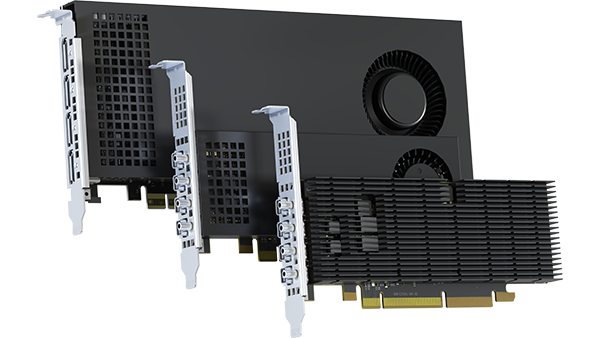

 Quote
Quote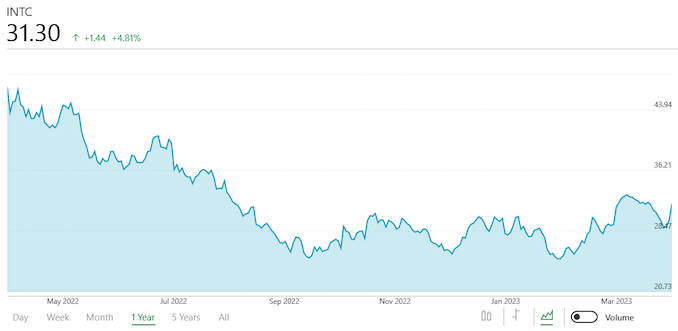
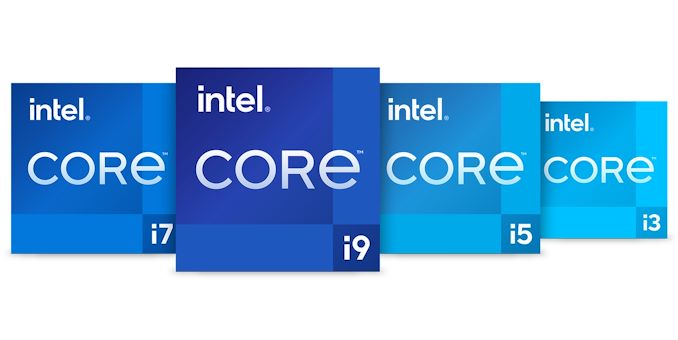
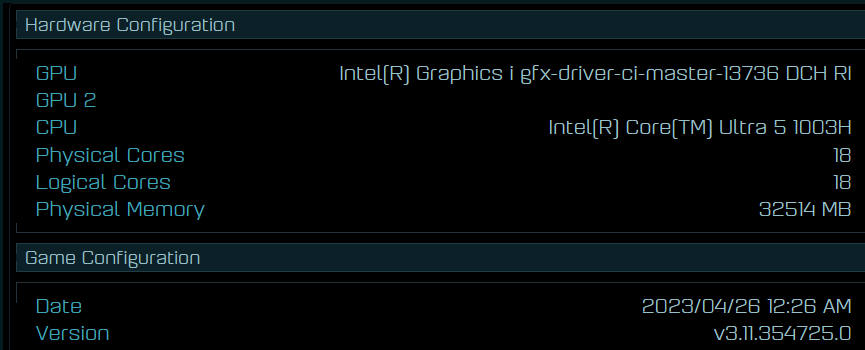
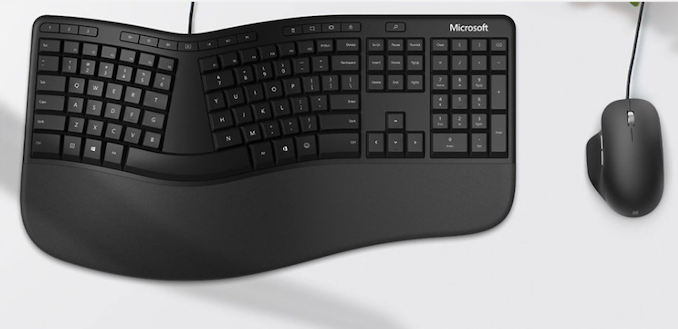
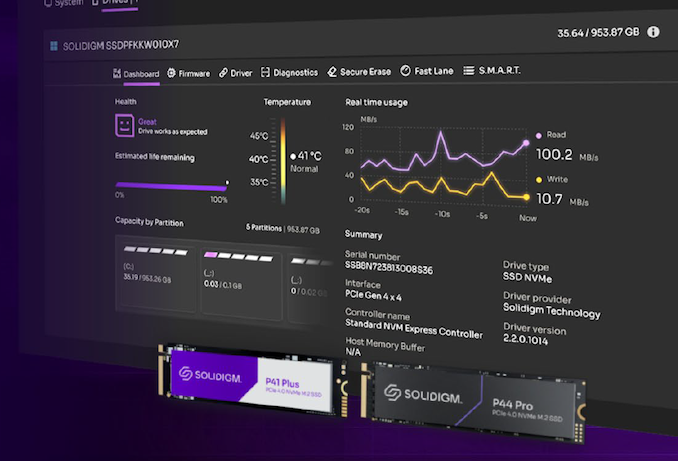
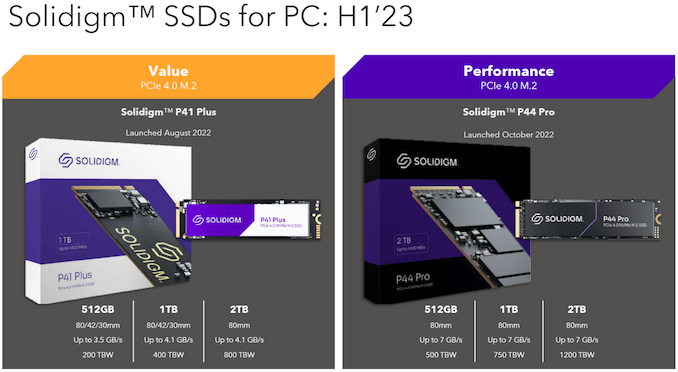
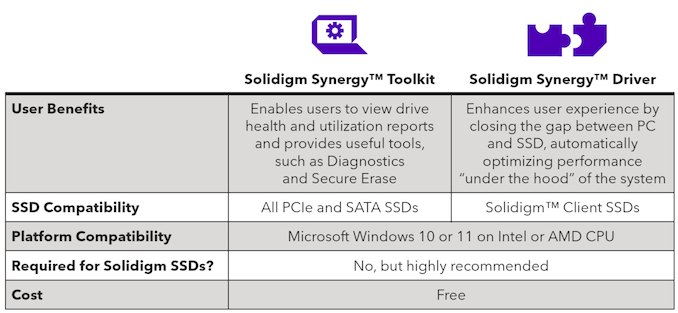

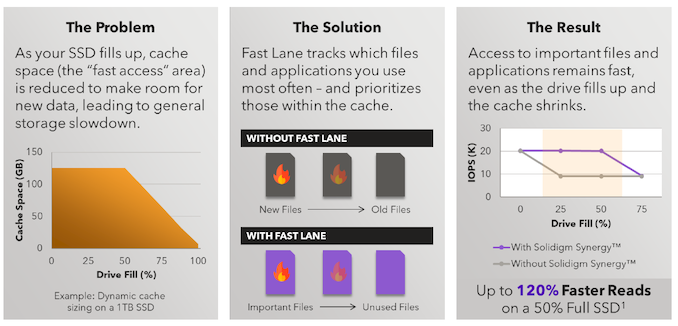
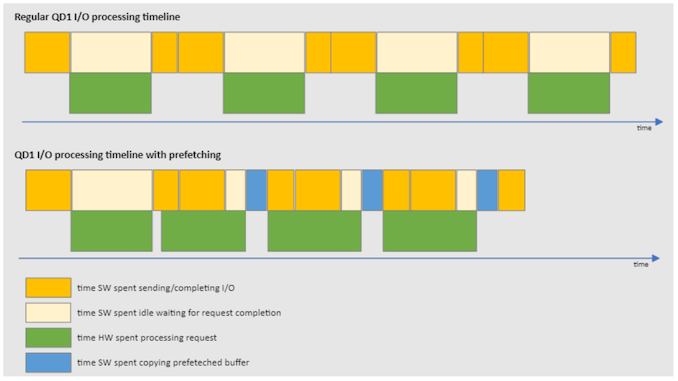
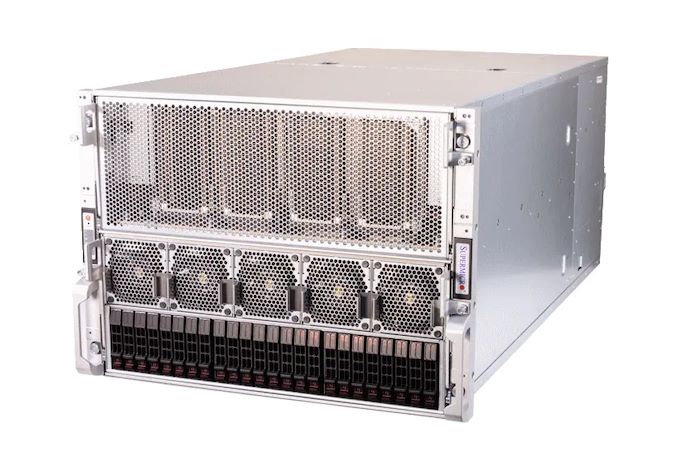
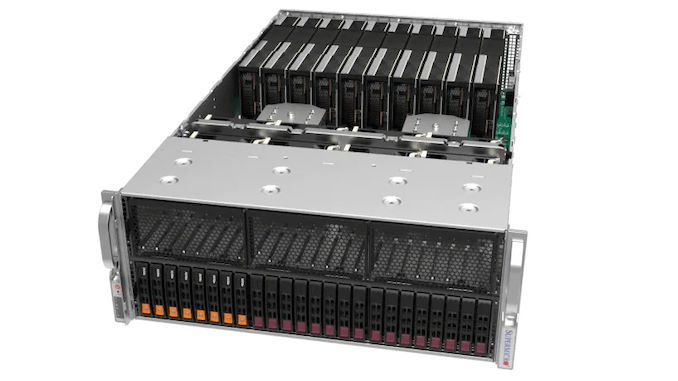

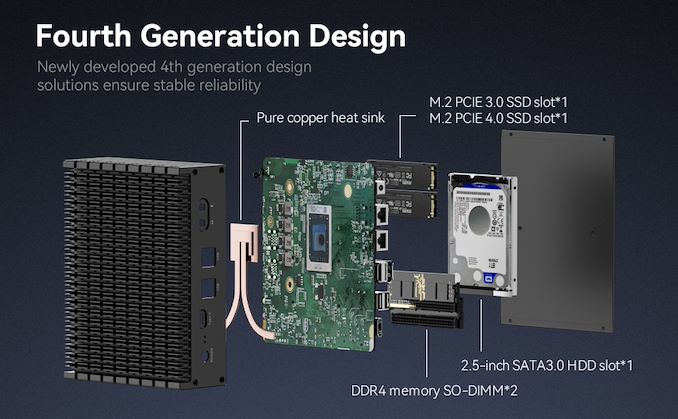
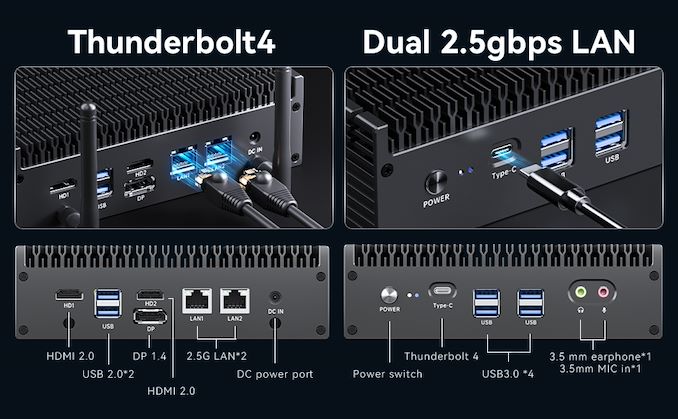
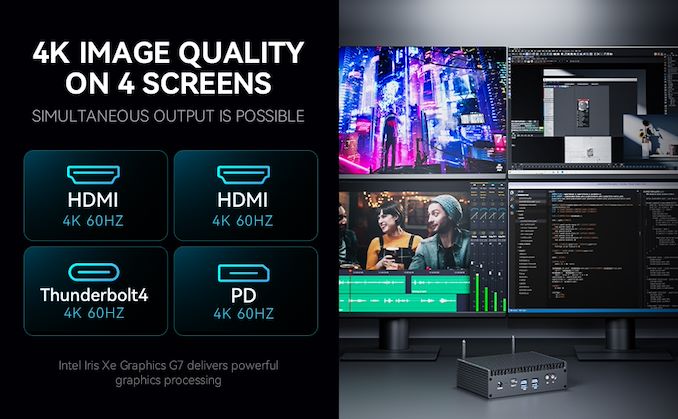
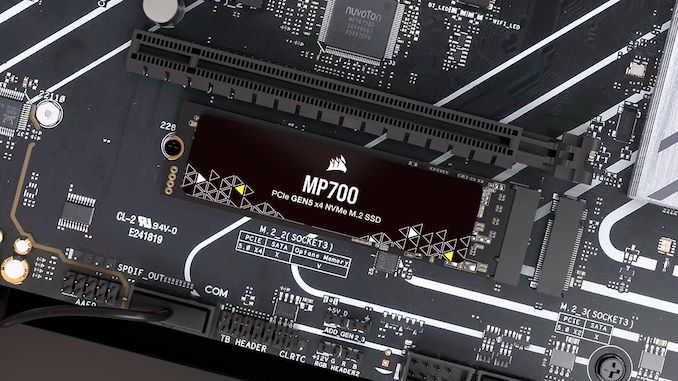

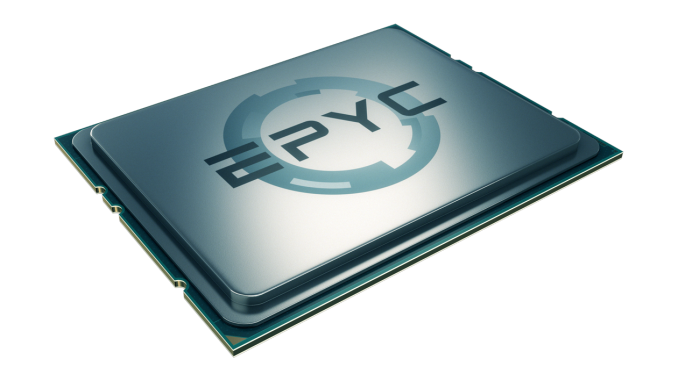

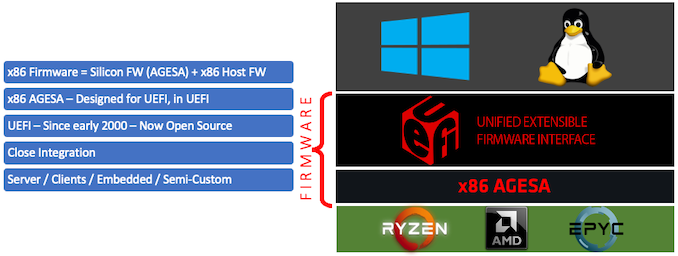
















Bookmarks